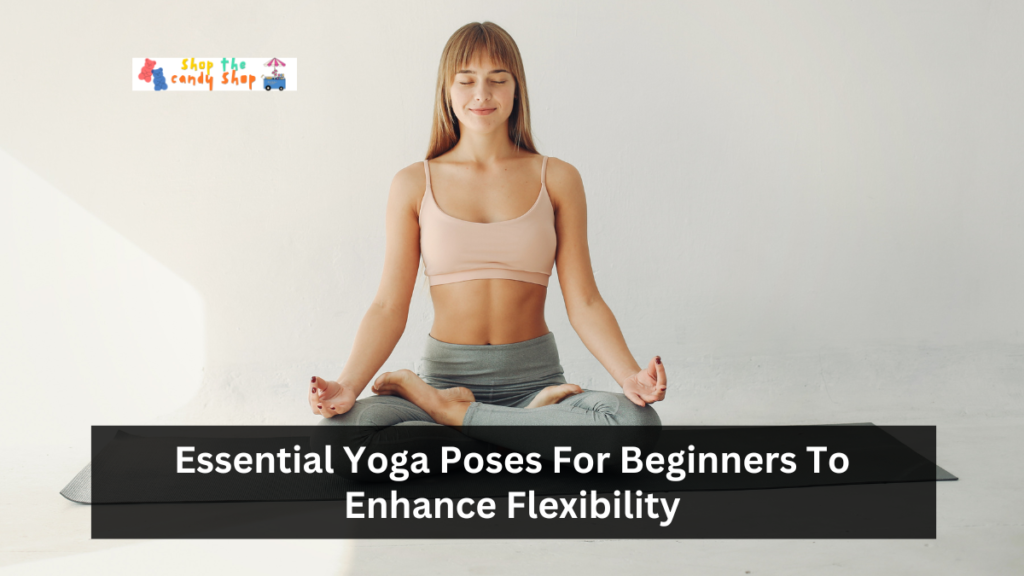Yoga is a great way to improve flexibility, relax, and generally feel better. For beginners, putting specific poses into a daily regimen can result in significant long-term flexibility gains.
This article delves into numerous essential yoga positions for beginners, explaining their advantages, suitable practices, and significant concerns. Individuals can use these positions to achieve greater physical and mental equilibrium.
Benefits Of Yoga For Flexibility
Regular yoga practice provides several benefits that go beyond simply being flexible. Increased flexibility can result in better posture, a lower chance of injury, and a more comprehensive range of motion in daily tasks.
Furthermore, yoga promotes mindfulness, which reduces stress and increases mental clarity. Research shows that practicing yoga increases bodily awareness, leading to healthier lifestyle choices. By adding flexibility-focused yoga poses, beginners can develop a holistic physical and psychological wellness approach.
1. Cat-Cow Stretch
The Cat-Cow stretch is a basic pose that promotes spinal flexibility while warming up the body. Begin in a tabletop position, hands under shoulders, knees under hips. Inhale deeply while arching the back and rising the head and tailbone to the heavens (Cow Pose).
Slowly exhale while rounding the spine and tucking the chin to the chest (cat pose). Repeat the procedure for five to ten breaths. This pose not only increases spinal flexibility but also relieves tension in the back and neck.
2. Downward Facing Dog
Downward Facing Dog is a versatile pose that stretches several body parts. Begin on hands and knees, then tuck the toes and lift the hips towards the ceiling to form an inverted “V” shape. Keep your hands shoulder-width apart and your feet hip-width apart.
Aim to stretch the spine while pressing the heels to the floor. Hold the posture for five to ten breaths. This position stretches the hamstrings, calves, and shoulders while also strengthening the arms and back, making it an excellent choice for beginners trying to improve flexibility.
3. Seated Forward Bend
The Seated Forward Bend is a great pose for extending your hamstrings and lower back. Sit with legs out in front of you and your feet flexed. Inhale and stretch the spine, then exhale while reaching forward to your feet. It is critical to keep the spine straight instead of curving the back.
Hold the position for five to ten breaths, feeling the stretch in the backs of your legs. This position can also help you relax and decrease anxiety, making it an excellent addition to a beginner’s program.
4. Lizard Pose
Lizard Pose works the hips and groins, increasing flexibility in these areas. Begin in the Downward Facing Dog pose and step the right foot forward, outside the right hand. Lower the left knee to the ground and let the hips to descend towards the floor.
Hold this pose for five to ten breaths, experiencing the deep stretch in your hips. This pose can be difficult, but it is good for strengthening hip flexibility, which is essential for many tasks and general mobility.
5. Cobra Pose
Cobra Pose is excellent for increasing spinal flexibility and opening up the chest. Begin by resting flat on your stomach, legs outstretched, and hands put under your shoulders. As you inhale, squeeze your hands together and elevate your torso off the ground, keeping the elbows slightly bent.
Hold for five breaths, experiencing a stretch at the front of your body. This pose counteracts the effects of extended sitting and promotes proper posture.
6. Bridge Pose
Bridge Pose is another effective approach to increasing flexibility and strength. Lie on your back, knees bent, feet flat on the floor, hip width apart.
As you inhale, push your hips to the sky, pressing through your feet and activating your thighs. Hold the pose for five to ten breaths, feeling your chest and spine stretch. This pose strengthens the legs and glutes while also increasing back flexibility.
Conclusion
Beginners can significantly increase their flexibility by incorporating these important yoga positions into their regular practice. Each stance provides distinct benefits and can be tailored to specific needs.
Individuals who develop their flexibility may see changes in their posture, strength, and overall well-being. Practicing yoga regularly will help you reach your full physical potential and live a healthy lifestyle.
FAQs
1. When Is The Best Time To Practice Yoga For Flexibility?
Yoga for flexibility is good at any time of day. However, mornings are generally great for increasing flexibility because the body is well-rested and ready to move.
2. How Often Should Beginners Practice Yoga To Improve Flexibility?
To see noticeable improvements in flexibility, yoga should be practiced two to three times a week. Long-term success requires consistent effort.
3. Are There Any Risks To Practicing Yoga?
While yoga is generally considered safe, newcomers should know their limits and avoid pushing too hard. Listening to the body and changing positions will help you avoid injury.
4. Can Yoga Help With Posture?
Yes, consistent yoga practice can help improve posture by strengthening the muscles that support the spine and increasing awareness of body alignment.
5. Is It Necessary For Beginners To Attend Yoga Classes?
While yoga courses can provide advice and encouragement, many novices find success practicing at home using internet resources or instructional videos.



